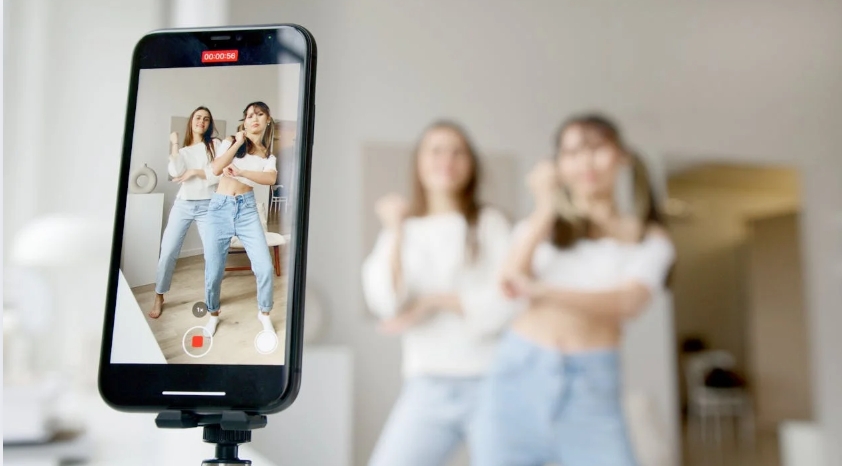The Rise of the Digital Iconoclasts
The sun-drenched beaches, the flawless skin, the artfully arranged acai bowls—each scroll through social media plunges users deeper into a vortex of engineered perfection. This is the domain of the modern influencer: digital architects who transform personal brands into empires, wielding power over global consumer habits with a single hashtag. Born from the democratization of fame, influencers have evolved from niche bloggers to cultural titans, commanding audiences that dwarf traditional media outlets. By 2025, the influencer marketing industry is projected to explode to $24.1 billion, fueled by platforms like Instagram and TikTok where authenticity and aspiration collide 5. Yet beneath the gloss lies a landscape increasingly described as the “wild west”—a realm where ethical boundaries blur, regulatory oversight lags, and the psychological toll on creators and consumers alike escalates into a public health concern. The very tools that enabled grassroots connection now incubate a new aristocracy of influence, where sponsored content masquerades as genuine passion and personal identity becomes the ultimate commodity.
This unchecked expansion has birthed a paradox: influencers simultaneously humanize brands through relatable narratives while perpetuating unattainable realities. Studies reveal that 75% of brands now dedicate budgets to influencer collaborations, banking on peer-like trust to drive sales 5. Yet this trust is increasingly weaponized. Young followers internalize curated lifestyles as achievable standards, sparking epidemics of body dysmorphia and financial recklessness. As one analysis notes, influencers promote “materialism and consumerism, encouraging followers to buy products they don’t need or can’t afford” while obscuring commercial motives behind curated intimacy 2. The absence of clear guardrails has allowed predatory practices to flourish—from undisclosed sponsorships to the exploitation of child influencers operating outside traditional labor protections 9. Algorithmic volatility compounds the chaos, where a platform’s policy shift can decimate livelihoods overnight, forcing creators into increasingly extreme content to maintain relevance 9. The result is a cultural feedback loop: the more outrageous the behavior, the greater the engagement—and the farther the industry strays from its aspirational roots.
We stand at an inflection point where the social cost of “influence gone wild” demands scrutiny. The phenomenon transcends marketing; it reshapes identity formation, consumer ethics, and digital wellbeing. Navigating this requires dissecting how authenticity became algorithmically manufactured—and who pays the price for paradise staged for likes.
Table: The Evolution of Influencer Platforms
| Platform | Primary Content Format | Key Influencer Type | Audience Engagement Style |
|---|---|---|---|
| YouTube | Long-form video (10+ min) | Vloggers, Educators | Deep connection through storytelling |
| Visuals, Stories, Reels | Lifestyle, Aesthetics | Aspirational, visually-driven | |
| TikTok | Short-form video (15-60 sec) | Viral Creators, Trendsetters | Algorithm-driven, snackable content |
| Podcasts | Audio conversations | Thought Leaders, Interviewers | Intimate, conversational |
The attention economy underpinning social media platforms has fundamentally reshaped influencer behavior. Algorithms prioritize content that generates strong emotional reactions and high engagement, creating an environment where controversy outperforms thoughtful discourse. As PRSA notes, “Users can choose the content they prefer to follow, view and engage with due to social media’s diverse and interactive culture” 1. This dynamic has birthed an entire generation of creators who understand that pushing boundaries—sometimes to wild extremes—is the surest path to visibility in an oversaturated digital landscape where over 50 million people worldwide now identify as content creators.
Anatomy of a Viral Meltdown
The phrase “influencers gone wild” encompasses a spectrum of behaviors ranging from calculated controversy to genuine psychological unraveling. These incidents typically fall into distinct categories with different motivations and consequences:
1. Shock-Value Stunts: Designed purely for virality, these acts prioritize attention above all else. Stephanie Matto, a reality TV star turned influencer, made headlines by selling jars of her flatulence for $1,000 each, claiming to earn $200,000 before health complications forced her to stop. She later pivoted to selling “fart jar NFTs,” blending absurdity with cryptocurrency hype 4. Similarly, British cosplayer Belle Delphine monetized her sexuality by selling “Gamer Girl Bath Water” for $30 per jar, netting approximately $90,000 while sparking debates about exploitation and absurdity in influencer marketing 412.
2. Cultural Insensitivity: As influencers travel globally for content, many have demonstrated profound cultural ignorance with damaging consequences. Russian influencer Alina Fazleeva faced deportation from Bali after posing nude in front of a 700-year-old sacred Banyan tree, deeply offending local Hindu communities. The incident highlighted the colonial undertones of influencers treating sacred sites as exotic backdrops for content without understanding their cultural significance 410. Similarly, Logan Paul’s infamous “Suicide Forest” video from Japan’s Aokigahara forest—where he filmed and joked about a deceased individual—ignited global condemnation and temporarily derailed his career 46.
3. Legal Boundary-Pushing: Some influencers deliberately test legal limits for content. Jake Paul repeatedly made headlines for trespassing, hosting unauthorized gatherings during pandemic lockdowns, and promoting questionable business ventures like his “$20 per month Financial Freedom Movement” course that promised to teach followers how to achieve social media stardom while working Uber jobs 611. His actions drew criticism from public officials and health authorities, yet paradoxically reinforced his “bad boy” persona that attracted his core audience 4.
4. Public Meltdowns: The psychological toll of constant online performance sometimes manifests in very public breakdowns. Beauty influencer James Charles saw his career nearly collapse when allegations of inappropriate messages to underage fans surfaced alongside a public feud with mentor Tati Westbrook. The scandal cost him over a million subscribers and lucrative brand partnerships 46. Similarly, Gabbie Hanna’s increasingly erratic online behavior, including tearful livestreams and controversial statements, demonstrated the mental health crisis brewing beneath the surface of influencer culture 12.

Table: Consequences of Influencers Gone Wild
| Consequence Type | Immediate Impact | Long-Term Impact |
|---|---|---|
| Audience Trust Erosion | Follower loss, negative comments | Lower engagement rates, diminished influence |
| Brand Relationship Damage | Cancelled sponsorships, contract termination | Difficulty securing new partnerships, lower rates |
| Platform Penalties | Demonetization, temporary bans | Permanent bans, algorithmic shadowbanning |
| Legal Repercussions | Fines, mandatory apologies | Lawsuits, criminal charges, deportation |
| Mental Health Impact | Anxiety, defensive reactions | Burnout, depression, career abandonment |
5. Engineered Controversy: Some “wild” moments are carefully orchestrated marketing ploys. Tana Mongeau and Jake Paul’s $500,000 fake wedding in Las Vegas was explicitly designed as a publicity stunt, complete with pay-per-view livestream. When fans discovered the marriage wasn’t legally binding and had been purely for content, they felt manipulated—yet the event generated millions of views and temporarily boosted both creators’ profiles 412. This blurring of authenticity and spectacle represents the calculated risk calculus many influencers now employ.
The Psychology Behind the Persona
Beneath the surface of wild influencer behavior lies a complex interplay of psychological drivers and systemic pressures that help explain why creators cross boundaries:
The Validation Addiction: Neurologically, influencer behavior mirrors gambling psychology. A 2022 Journal of Behavioral Addictions study found content creators exhibit traits similar to compulsive gamblers, constantly chasing the dopamine hit from viral success 4. Each notification—whether a like, comment, or follower milestone—triggers a neurochemical reward that reinforces boundary-pushing behavior. As Tom Kuegler, a travel blogger with 16,000 Medium followers, confessed: “Sometimes I literally get 50 responses to an article I wrote… I always think that’s the highest compliment—and I always try to respond to everybody. But to be honest with you, I can’t sometimes” 3. This overwhelming yet addictive validation creates a dangerous feedback loop.
The Algorithmic Pressure Cooker: Platforms operate on engagement-based algorithms that prioritize content eliciting strong reactions. The average lifespan of a TikTok trend is mere days, while an Instagram post peaks within 48 hours. This creates a “content treadmill” effect where creators must constantly produce increasingly provocative material to maintain relevance 4. As one analysis notes, “In a competitive space where every like, comment, and share matters, going wild becomes a tool for remaining visible” 2. The fear of irrelevance becomes existential when income depends on maintaining algorithmic favor.
FOMO Economics: Influencers increasingly operate in a comparison-saturated environment where peers’ viral successes trigger panic. The “Fear of Missing Out” drives creators to escalate stunts when they see competitors gaining traction through controversy 12. This psychological phenomenon explains why wild behavior often comes in industry waves—like the “tide pod challenge” or extreme diet trends—as influencers imitate what appears successful without adequate risk assessment.
Identity-Content Fusion: Unlike traditional careers with work-life boundaries, influencing demands constant personal branding. Over time, creators often experience identity erosion as their authentic self merges with their online persona. This explains why criticism of content feels like personal attacks, triggering defensive reactions. Kuegler articulated this tension: “Everybody expects me to know everything… I’m only 24. And I get it. It’s kind of a cop out to say that. How can I enjoy the splendors of having some sort of an audience without taking the heat that comes along with it? I’m just saying, though. I’m still a human being” 3.
The Echo Chamber Effect: Fan communities often enable destructive behavior through unconditional validation. When influencers cross lines, their most devoted followers defend them, creating an insulating echo chamber that distorts reality. This explains why creators like Jake Paul could dismiss pandemic safety concerns—his core audience celebrated his “rebellion,” reinforcing his behavior despite public condemnation 412.
Monetizing Mayhem – The Business of Going Wild
The influencer industry has developed sophisticated monetization machinery that often rewards controversy, creating perverse incentives for wild behavior:
Viral Profit Multipliers: When influencers “go wild” successfully, they unlock exponential revenue streams. During viral moments, creators can leverage heightened visibility through:
- Affiliate Marketing Boosts: Commission earnings spike from product links
- Merchandising Opportunities: Controversy-themed merchandise (e.g., “Canceled” hoodies)
- Exclusive Content Platforms: Fans pay premiums for “uncensored” content on Patreon or OnlyFans
- Appearance Fee Inflation: Higher rates for club appearances and events
- Algorithmic Favor: Increased organic reach from engagement-driven platforms 212
Miss Excel (Kat Norton) exemplifies how viral attention converts to profit. Her Excel tutorial TikToks featuring high-energy dances led to a $297 Excel course that earned more in two months than her corporate salary. She now works “15 hours a week” while generating six-figure days during webinar promotions 11. This lucrative potential incentivizes creators to pursue virality at any cost.
The Controversy-to-Cash Pipeline: Some influencers deliberately employ a shock-monetize-apologize cycle:
- Provocation Stage: Post controversial content to trigger massive engagement
- Monetization Phase: Launch products/courses during peak visibility
- Backlash Management: Issue calculated apology to retain core audience
- Rebranding Period: Position themselves as “redeemed” for future opportunities
This pattern is evident in Logan Paul’s career trajectory—after his Suicide Forest scandal caused massive brand abandonment, he rebuilt through boxing events and podcasts, eventually regaining corporate partnerships 46.
Predatory Course Ecosystems: The online course industry has become particularly rife with exploitation. Influencers like Brendon Burchard offer “$997 courses” promising “seven-figure marketing strategies” that essentially teach students to become influencers themselves. As marketing consultant Nicole Ouellette observed, “If there was one thing that ‘worked,’ I would tell you what it is, make you pay me $10,000 for it, and lie on a beach” 11. These courses often blame students for failures while instructors profit regardless of outcomes.
Brand Complicity: Corporations frequently enable wild behavior through selective tolerance. While brands quickly distance themselves from truly toxic controversies, many quietly benefit from edgy creator partnerships that generate buzz. Winnebago’s wheelchair-ready RV campaign demonstrates ethical collaboration—by sponsoring authentic trips for disabled influencers like “Roll with Cole & Charisma,” they generated 8 million views and 15% social growth through genuine storytelling rather than shock tactics 1. Unfortunately, many brands prioritize engagement metrics over ethical alignment, creating a “wink-and-nod” relationship with boundary-pushing creators.

Cultural Collateral Damage
The influencer wildness epidemic creates societal ripple effects extending far beyond individual creators:
Cultural Appropriation as Content: The relentless content grind drives influencers to commodify cultural traditions without context. From non-South Asians hosting “spiritual retreats” to white creators profiting from Black dance trends, this pattern extracts cultural value while ignoring historical significance. The resulting backlash often punishes minor creators while major influencers face minimal consequences, reinforcing power imbalances 12.
Reality Distortion Fields: Through curated perfection and staged wildness, influencers create collective delusion about achievable lifestyles. Young followers particularly internalize these distortions—studies show increased depression and body image issues among teens comparing themselves to edited influencer content. The fabricated luxury displayed (often through rented props) fuels unrealistic expectations and financial recklessness as followers chase unattainable aesthetics 612.
Erosion of Expertise: The influencer economy flattens knowledge hierarchies, positioning creators as equal authorities to trained professionals. Wellness misinformation proliferates as influencers without medical credentials promote unverified supplements and diets. Similarly, financial “gurus” like Andrew Tate’s “$50/month Hustler’s University” peddle dangerous wealth fantasies 11. This creates a dangerous environment where evidence-based expertise struggles against charismatic amateurism.
Community Exploitation: Local businesses increasingly bear the brunt of influencer culture. When food reviewer DariusCooks visited St. Louis, his critiques sparked online battles so intense they escalated to real-world threats: “next thing you know—Natural Bridge and Grand -SLU Emergency Room” 5. Small restaurants face disproportionate impacts from influencer reviews—a single viral critique can devastate businesses without resources for reputation management.
The “Cancel Culture” Conundrum: Public backlash against wild influencers operates with inconsistent logic. While some face career-ending consequences for past mistakes, others like David Dobrik weather serious allegations (including sexual assault claims within his “Vlog Squad”) with minimal long-term impact 12. This inconsistency undermines accountability mechanisms, allowing the most powerful influencers to operate above ethical norms that bind smaller creators.
Pathways to Sustainable Influence
Amid the chaos, solutions are emerging to transform influencer culture toward ethical sustainability:
Platform Accountability Reforms: Social networks must evolve beyond empty gestures toward meaningful responsibility:
- Algorithmic Transparency: Disclose how content amplification works
- Mental Health Safeguards: Warning systems for creators showing distress signals
- Three-Strike Policies: Progressive penalties for ethical violations
- Cultural Sensitivity Training: Mandatory education for monetized creators
- Authenticity Verification: Labeling staged/scripted content as entertainment 10
Creator Education Initiatives: Organizations like the Influencer Marketing Trade Association now offer certification programs covering:
- FTC disclosure compliance
- Cultural intelligence training
- Financial literacy for creator businesses
- Mental health first aid
- Media law fundamentals 6
Brand Partnership Reformation: Progressive companies are implementing ethical collaboration standards:
- Values Alignment Checks: Vetting creators beyond audience metrics
- Long-Term Relationships: Moving beyond transactional campaigns
- Crisis Protocols: Jointly developed response plans for controversies
- Mental Health Provisions: Funding therapy access in creator contracts
- Authenticity Premiums: Higher compensation for unedited content 110
Creator Cooperatives: Emerging collectives like the Creator Guild offer alternative support structures:
- Group mental healthcare plans
- Ethical guideline development
- Legal defense funds
- Algorithmic change advocacy
- Sustainable monetization models 10
Audience Literacy Education: Schools and nonprofits are developing digital critical thinking curricula teaching:
- Spotting manipulated media
- Identifying undisclosed ads
- Understanding algorithmic bias
- Recognizing influencer mental health distress signals
- Ethical engagement practices 612

The Future of Influence
As we approach 2026, several trends suggest an industry inflection point:
The Micro-Community Renaissance: Audiences increasingly reject mega-influencers for authentic specialists with smaller, engaged followings. Nano-influencers (under 10K followers) now command higher engagement rates by fostering genuine connections around shared interests rather than manufactured personas 112.
Post-Platform Creators: Savvy influencers are reducing algorithmic dependency by:
- Building email/newsletter audiences
- Developing proprietary platforms
- Focusing on IRL (in real life) experiences
- Creating subscriber-only content
- Diversifying across emerging platforms 11
Mental Health Integration: Creator sustainability now requires wellness infrastructure:
- On-set therapists for intense productions
- Mandatory digital detox periods
- Content creation limits in contracts
- “No-Edit” authenticity movements
- Burnout prevention protocols 310
Regulatory Expansion: Governments are implementing tangible oversight:
- FTC fine increases for undisclosed ads
- EU creator-specific labor classifications
- Child influencer protection laws
- Platform liability for harmful content
- Standardized disclosure requirements 610
The Values Economy: Brands increasingly prioritize ethical alignment metrics:
- Audience well-being impact studies
- Creator ethical practice audits
- Cultural contribution assessments
- Sustainability commitments
- Transparency scores 1
The wild era of influencer culture represents a turbulent adolescence in the broader digital transformation of media and celebrity. As the industry matures, the most successful creators will be those who recognize that sustainable influence requires balancing authenticity with responsibility. The future belongs not to those who shout loudest, but to those who build genuine communities based on trust, transparency, and mutual respect. The chaotic pioneers who tested boundaries have provided valuable lessons—now comes the harder work of building something enduring from their wake.

